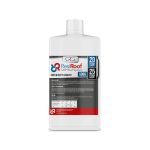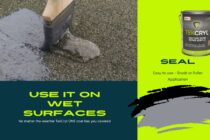Catalyst Usage During Summer
Mastering Catalyst Usage During Summer
Achieve Outstanding Results
Introduction: As the temperature rises and the sunny days of summer beckon, it’s essential to adapt our practices to maximize the effectiveness of catalysts. Whether you’re an experienced professional or a DIY enthusiast, understanding how to use catalysts properly during this season is crucial for achieving exceptional results. In this blog post, we will explore some valuable tips and guidelines to help you harness the power of catalysts during the summer months.
- Optimal Catalyst Selection: Selecting the right catalyst for summer use is the first step towards success. Manufacturers often provide specific catalyst options designed for warmer temperatures. Ensure you have the appropriate catalyst type suitable for the conditions you’ll be working in.
- Mindful Timing: Timing is everything, especially when it comes to using catalysts during summer. Plan your work schedule to avoid the hottest parts of the day, usually between 12-2pm. Starting your projects in the early morning or late afternoon will help you achieve better results by minimizing the impact of extreme heat.
- Temperature Considerations: Catalysts are sensitive to temperature variations, and summer heat can significantly affect their performance. It’s crucial to be mindful of the recommended temperature ranges provided by the manufacturer. Avoid using catalysts when the temperature exceeds their specified limits, as this can lead to suboptimal curing and potentially compromise the final outcome.
- Hardener Adjustments: In warmer temperatures, it’s common to adjust the ratio of hardener to catalyst. Check the manufacturer’s instructions for any recommended modifications. As a general guideline, reducing the percentage of hardener used, such as transitioning from a 2% to a 1% concentration, can help accommodate higher temperatures and ensure proper curing.
- Avoiding Direct Sunlight: When working with catalysts during summer, it’s essential to shield your materials from direct sunlight. Exposure to intense UV rays can cause premature drying, uneven curing, or even discoloration. Whenever possible, find a shaded or indoor workspace to maintain consistent conditions throughout the curing process.
- Surface Preparation: Proper surface preparation is vital for catalysts to adhere effectively. Thoroughly clean and degrease the surface before application. Be cautious of high humidity levels during summer, as they can impact the bonding process. Use appropriate cleaners and ensure a dry surface to achieve optimal results.
- Storage and Handling: Summer heat can have adverse effects on catalysts, even during storage. Store your catalysts in a cool and dry place, away from direct sunlight or excessive heat. Always follow the manufacturer’s guidelines for proper storage to maintain the integrity and effectiveness of your catalysts.
Conclusion: Mastering the usage of catalysts during the summer months opens up a world of possibilities for achieving outstanding results in your projects. By carefully selecting the appropriate catalyst, being mindful of timing, adjusting hardener concentrations, avoiding direct sunlight, and following proper surface preparation and storage practices, you can ensure optimal performance and durability.
Remember to consult the manufacturer’s recommendations and guidelines specific to the catalysts you are using. By implementing these tips, you’ll be well on your way to creating remarkable outcomes and enjoying successful projects throughout the summer season.
So, embrace the warmth of summer and let your catalysts work their magic. Happy crafting and building!
Note: If you have placed an order and haven’t yet used the item please use 1% hardener as winter hardener is double strength, please follow the guidelines mentioned above to avoid rapid curing.
LEARN A BIT MORE AND CONTINUE READING


